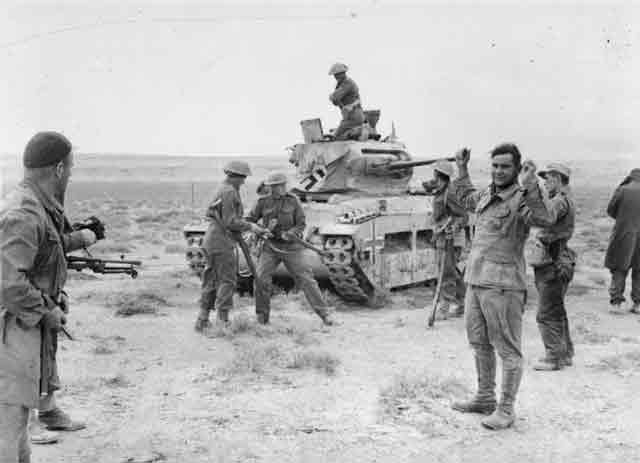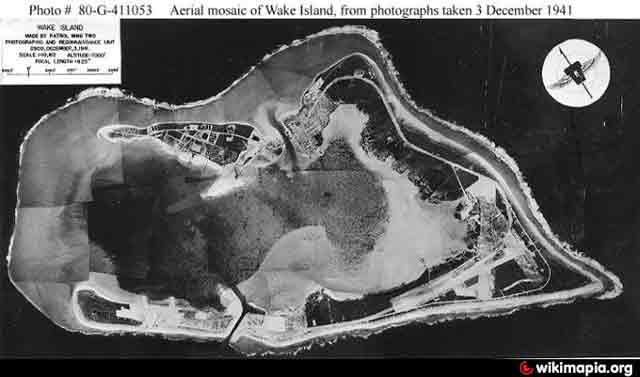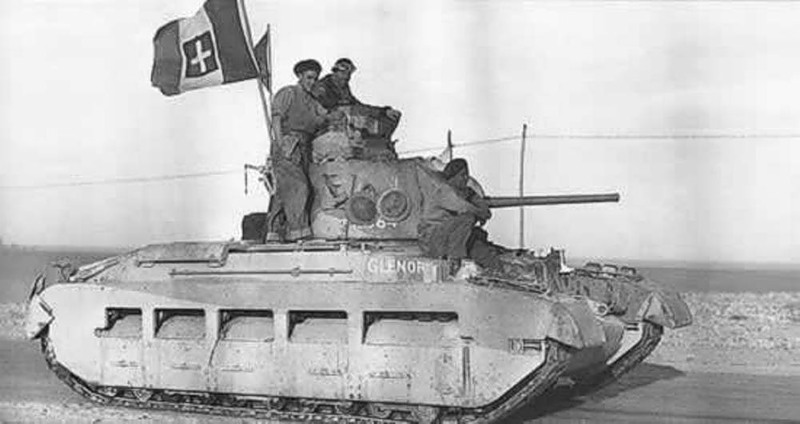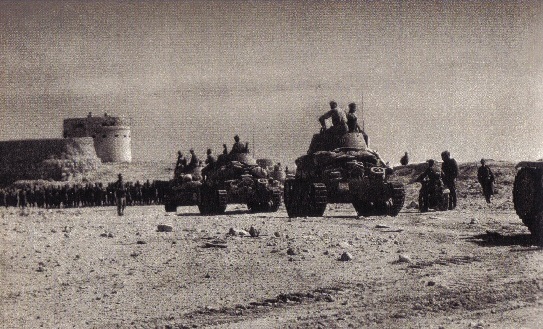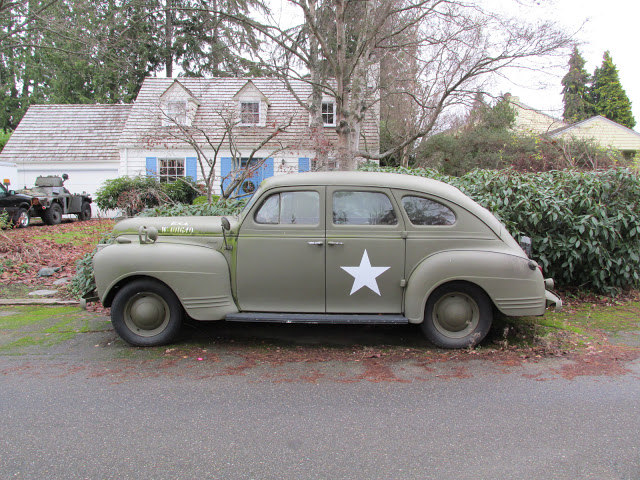Syrian/Lebanon Campaign: The Britsh approach toward Damascus during Operation Exporter has gained ground on
19 June 1941, but suddenly shows signs of stalling due to fierce Vichy French counterattacks. This has resulted in overall control of the advance being taken away from General Henry Maitland Wilson on the 18th, and today results in Major-General John Evetts, commander of the British 6th Infantry Division, replacing Brigadier Wilfrid Lewis Lloyd as commander of Gentforce east of Merdjayoun.
The 5th Indian Brigade has taken Mezzeh, a key junction on the Damascus/Beirut road, during the night. However, they spend the 19th trying to keep it against furious French counterattacks. Evetts quickly requests reinforcements and receives the British 16th Infantry Brigade from the 7th Australian Division and three Australian battalions: the 2/3rd Machine Gun Battalion and the 2/3rd and 2/5th Infantry Battalions.
The British and Australian reinforcements, however, require time to get to Mezzeh, and it is time that the embattled Indian troops may not have. By evening, they are isolated and taking tremendous casualties from the French and their Renault R35 tanks. Expecting the advance to continue straight to Damascus, the Indian troops have not carried with them mundane things like food and water for an extended siege. So, there is no food or water, and there are dead men everywhere. After dark, the Indian troops send three men who manage to get past the encircling French forces and report the dire situation to Evetts. The French claim to have taken 400 prisoners.
 |
| The British still fear an invasion and practice to prevent one. Here, the 53rd Battalion The Reconnaissance Corps ride in Beaverettes (RAF light armored cars) during maneuvers at Ballykinlar in Northern Ireland. They are armed with .303 light machine guns or Boys .55 inch anti-tank rifles. Unfortunately, despite the heavy armor, they are powered by a 46-hp engine and the top speed is only 24 mph (38 km/h). 19 June 1941. |
Near Merdjayoun, meanwhile, the situation if anything is even worse for the British. Easily taken a week ago by the Australian 25th Brigade, the majority of those troops were sent east to help with the advance along the coast. The 25th had left behind only a small force to defend Merdjayoun, but this was considered acceptable because the Vichy French were giving ground.
This turns out to have been a bad idea, as the French already have retaken part of Merdjayoun and have placed the embattled Australians in a precarious position. On the 19th, the Vichy French there continue the attack against the outnumbered Australians and claim to take 80 prisoners. Australian Lieutenant Roden Cuttler, a forward artillery observer, takes over a Bren gun and anti-tank rifle after others at his outpost are killed and helps to hold an outpost in the town against the French. After being surrounded, he escapes in the dark. For this and subsequent valor, Cuttler earns the Victoria Cross, the only Australian artilleryman to earn it during World War II.
Lieutenant General Sir John Dudley Lavarack, who now has operational control in Syria and Lebanon, confers with Wilson in Jerusalem. Lavarack gets permission from Wilson to let the forces around Damascus and around Merdjayoun work things out as best they can while the main effort remains on the coast road to Beirut.
The Vichy government, meanwhile, already is asking the British via the American consulate for peace terms. However, there is no indication that this will end the conflict anytime soon, at this point it is just casual talk.
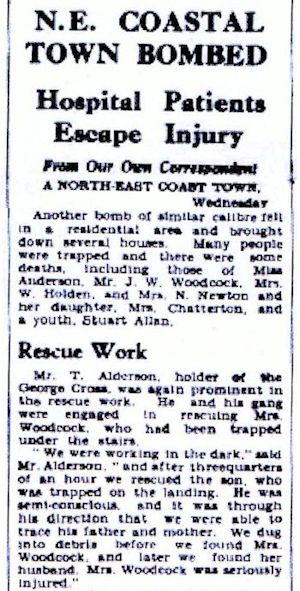 |
| A report in the 19 June 1941 Yorkshire Post about a Luftwaffe bombing the previous day. Note that they do not identify the actual town bombed for security reasons - it was Bridlington. There were seven deaths. |
European Air Operations: During the day, RAF Bomber Command conducts Operation Blot III, a Circus mission. This is an attack by 24 Bristol Blenheims of No. 2 Group and then 12 more Blenheims on the Le Havre dockyards. There is a thick haze that confuses many of the RAF navigators, and only 24 of the bombers make the rendezvous over Tangmere. An additional 15 bombers failed to find the target, and only nine bombers actually make it to Le Havre. They bomb No. 1 Dry-Dock successfully. RAF No. 616, flying escort, tangles with the Luftwaffe near Le Havre and claims one fighter.
During the night, RAF Bomber Command sends 28 aircraft against Cologne and 20 against Dusseldorf.
 |
| Grimsby class sloop HMAS Parramatta at Mersa Matruh, Egypt, 19 June 1941. The Parramatta sank just over five months later, on 27 November (Photo: RAN Historical, it appears in Paul and Frances Margaret McGuire's 'The Price of Admiralty' [Oxford University Press, Melbourne 1944] opp. p243). |
Battle of the Atlantic: The Luftwaffe (Focke-Wulf Fw 200 aircraft of I Staffeln, Kampfgeschwader 40) bombs and sinks 1306-ton British freighter Empire Warrior a few miles off Guardians Bar, Gulf of Cadiz. All 25 aboard survive, picked up by a Portuguese destroyer.
The Luftwaffe in the same attack also bombs and badly damages 1770-ton Swedish freighter Gunda in the same area as the Empire Warrior. British freighter Peterel takes the Gunda in tow, but it eventually sinks. The entire crew survives.
The Luftwaffe bombs and damages Royal Navy destroyer HMS Vanessa in the North Sea. During the encounter, the Vanessa collides with 430-ton ASW trawler Turquoise. Vanessa has to be towed to Yarmouth by destroyer Vesper and is out of action until 15 April 1942.
Dutch patrol boat Sirius seizes Vichy French vessel Compiegne. However, in light of the confused state of relations between the UK and Vichy France (note that the British and Vichy French right now are battling each other in Syria and Lebanon while the British still wish to curry favor with France), the Admiralty ultimately orders the French ship released.
Royal Navy minelayer HMS Plover lays minefield BS.59 in the North Sea.
Canadian corvette HMCS Moose Jaw (Lt. Frederick E. Grubb) is commissioned.
United States destroyers USS Redoubt and Roebuck are laid down.
U-619 and U-620 are laid down.
 |
| 'Matilda', or `I', tanks in the Western Desert, Egypt in June 1941. |
Battle of the Mediterranean: The German News Bureau in Berlin crows about General Erwin Rommel's recent defeat of the British during Operation Battleaxe. It notes:
The most recent reports indicate that the British have lost more tanks than was earlier estimated: When we cleared up the battlefield, we found 200 British tanks destroyed or immobilized by German and Italian guns, which the British were forced to abandon when they retreated.
The German figures are exaggerated - British tank losses were far fewer than 100, let alone 200 - but the complete British defeat gives the Germans a welcome opportunity to pat their staggering Italian allies on the back in the shared victory.
An Axis convoy departs from Naples with five freighters/transports bound for Tripoli. It is escorted by four Italian destroyers.
The Royal Navy headquarters at Alexandria institutes a major resupply of the embattled British forces in the Western Desert. It begins the "Tobruk Ferry," which entails sending destroyers to Mersa Matruh and Tobruk at night. The Luftwaffe dominates the skies over North Africa at this time and such naval missions are extremely hazardous.
Following a review of Malta's defenses, the War Office promises large reinforcements. Whitehall promises thousands of additional troops to prevent a German takeover as in Crete - but there remains the small matter of actually getting them there. Governor Dobbie replies that the most urgent needs are additional RAF forces and an infantry battalion.
Spy Stuff: Soviet agents in Germany and Finland continue issuing warnings to the Kremlin of a coming German attack on the Soviet Union. The spy reports now routinely identify the date of the attack as 22 June.
 |
| Wellington W5665, shot down by a German night fighter during the night of 18-19 June 1941 over Frisian Isle Ameland. Of the six-man Polish crew, four were killed and buried in the Roman Catholic cemetery at Nes there, and two captured. The interred men were later reburied in Nijmegen pursuant to a 1960s centralization scheme for war dead (RAF via Traces of War). |
German/US Relations: Following the US State Department's 16 June order to the Germans to close their consulates, Germany and Italy respond by ordering the Americans to do the same in their countries no later than 15 July. This appears to be another reverberation from the 21 May 1941 sinking by a U-boat of US freighter Robin Moore off the African coast. This is a blow for Allied intelligence, as the US consulates have served as valuable "listening posts" within Occupied Europe.
German/Hungarian Relations: General Halder, Chief of the OKH (Army High Command), visits Hungary for a conference.
Anglo/US Relations: Lord Halifax, the British Ambassador to the United States, gives a
speech at the Harvard Alumni luncheon. He notes:
The President has declared in terms that no man can mistake on which side in this grim contest stands the United States. And there is no need for me to dwell upon the encouragement that his words have brought to my people, to the whole British Commonwealth, or to lovers of freedom everywhere.
He calls England "the last home of freedom in Europe."
Apparently given as a response to the University of Rochester, New York conferring an honorary degree on Winston Churchill, Oxford University confers the degree of Doctor of Civil Law on President Franklin Roosevelt. Neither man, of course, attends the ceremony.
 |
| A map of military units along the German/Soviet border around 19 June 1941. Shown are three German Army Groups, North, South, and Center in Poland, with additional allied Romanian troops to the south. |
German Military: The Kriegsmarine is mining the Baltic, while the Luftwaffe continues reconnaissance flights over the Soviet Union.
Luftwaffe night-fighter ace Egmont Prinz zur Lippe-Weißenfeld is mentioned in the Wehrmachtbericht bulletin of the headquarters of the German Wehrmacht. This is considered one of the highest honors a German officer can receive and is coveted even by generals. Prince Lippe-Weißenfeld (he is an heir to the throne of the Principality of Lippe, which was abolished under the Weimar Republic) now has about 10 victories over the bombers, which are considered the most prestigious enemy aircraft to destroy.
The Wehrmacht cancels all soldier leaves. Reichsfuhrer-SS Heinrich Himmler, however, who technically is not in the Wehrmacht, flies home to his private house on Lake Tegerness to visit with his family. They go to a nearby field in the Valepp Valley and pick daisies by the roadside for the propaganda cameras.
Soviet Military: The Soviet Navy issues a Grade 2 Alert to its units. The Red Air Force orders camouflaging of airfields, and the government orders blackout in cities along the western border. Some of these orders, such as the camouflaging of airfields, take days to begin implementing and are barely started when Operation Barbarossa begins.
General Pavel Batov assumes command of the 9th Rifle Corps.
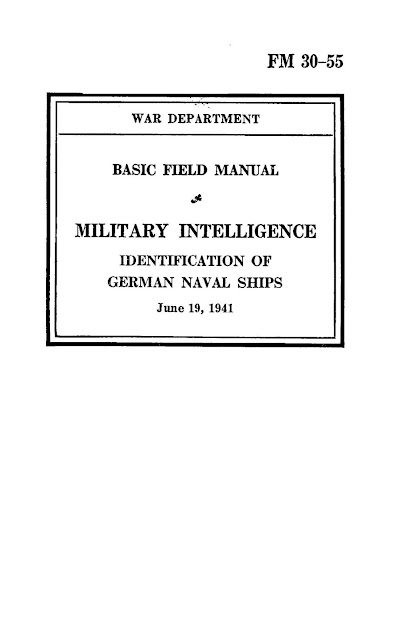 |
| Field Manual No. 30-55, Basic Field Manual, Military Intelligence, Identification Of German Naval Ships, 19 June 1941. |
British Military: Rear Admiral E.N. Syfret CB becomes commander of 18th Cruiser Squadron.
German Government: After some meetings during the day, Adolf Hitler spends the evening drafting his "Proclamation" for Operation Barbarossa. This will be issued to the troops shortly before the opening of Operation Barbarossa. It is a curiously dour document that pins the entire future of European civilization itself on the outcome of the invasion.
Around 18:00, Foreign Minister Ribbentrop telephones to say that Soviet Ambassador Dekanozov has stopped by the Ministry, transacted some normal business, made some small talk and jokes, and then left without incident. This ends 24 hours of uncertainty after Dekanozov on the 18th had indicated he needed to visit the German Ministry for unspecified reasons.
British Government: King George VI and Queen Elizabeth visit factories and war ruins in Billingham and other areas in the northeast.
 |
| An RAF Second World War vertical aerial photograph of Crail airfield, 19 June 1941. © Courtesy of Historic Environment Scotland (RAF Air Photographs Collection via Airfields of Britain). |
Holocaust: Hitler talks to Hans Frank, the Governor-General of the occupied Polish territories (
Generalgouverneur für die besetzten polnischen Gebiete). Frank controls all of the territories, known as the General Government, that encompass pre-war Poland aside from those directly incorporated into the Reich - roughly half of the original 187,000 square miles occupied by the Wehrmacht (which of course does not include the far larger portion allocated to the Soviet Union).
Frank long has objected to having Jews from throughout Occupied Europe shipped to the General Government for internment. This is partly because he resents having them under his administration, but more importantly, because controlling them has expanded the influence in the General Government of Reichsfuhrer-SS Heinrich Himmler - at Frank's expense. Frank sees himself as a sort of overlord and chafes at having other authority in "his" territory.
Hitler tells Frank that the territories soon to be wrested from the Soviet Union will become the new "home" of the Jews. These new destinations in "the East" are to replace the nebulous destination of Madagascar that has been bruited about within the government as the eventual home of European Jewry. Frank is delighted and quickly tells his staff that there will be no need for more Ghettos such as the ones in Warsaw and Lodz because all the Jews from now on - including the ones already in the Ghettos - will be heading "east.'
Hitler, however, is unclear about what he really intends for the Jews. The only thing that Frank cares about is that the Jews are heading "east" of his own domain, so he does not press for further details. Where in the "east" Hitler means is left undefined, and what would happen to the Jews once they got there is deemed an unimportant detail at this stage. This will be resolved at the Wannsee Conference in January 1942.
In Romania, the government orders Jews to move to city Ghettos.
 |
| The big news in northern Michigan is the introduction of dial service. Mayor Hinkley makes the first dial call to his mother. Northern Michigan Review, 19 June 1941. |
American Homefront: New York Yankee Joe DiMaggio gets a home run and two singles in New York against the Chicago White Sox. DiMaggio now has hit in a club-record 32 games in a row.
General Mills introduces Cheerioats on store shelves. Designed by food science expert Lester Borchardt, they arise from his experiments in "puffing" oats into tiny ovals (each 1/2-inch (12.7 mm) diameter, .0025 ounce (71 mg)). The name is changed to Cheerios® in 1945 and remains a staple on breakfast tables into the 21st Century.
Future History: Václav Klaus is born in Prague, which at this time is within the German Protectorate of Bohemia and Moravia. He grows up in the middle-class neighborhood of Vinohrady. He later says that, at age 3, he helps to build barricades in Prague during the uprising of May 1945. Klaus grows up to become a top politician within the Czech Republic and, ultimately, the 2nd President of his country for two terms from 2003-2013. He survives a weird assassination attempt with an airsoft gun by a communist in 2012 and remains as of this writing an elder statesman of the Czech Republic.
Roden Cuttler, as described above a recipient of the VC for his actions in Medjayoun on 19 June 1941 and subsequent days, goes on to earn a Knighthood and become Governor of New South Wales, Australia.
Irina Petrescu is born in Bucharest, Romania. She grows up to become a top Romanian film actress in the 1960s and wins the Best Actress award at the 6th Moscow International Film Festival for her role in "A Woman for a Season" (1969). Petrescu passes away on 19 March 2013.
 |
| Gravestone of Joseph Jossie Goldman, a 22-year-old South African Sergeant-Pilot in the RAF who perished on 19 June 1941. He perished near Baynards Green when his training flight in a Hampden crashed near the airport. This is located at Upper Heyford Cemetery. |
June 1941 June 1, 1941: Farhud PogromJune 2, 1941: Massacres on CreteJune 3, 1941: Kandanos MassacreJune 4, 1941: Kaiser Wilhelm Passes AwayJune 5, 1941: Death in ChungkingJune 6, 1941: Hitler's Commissar OrderJune 7, 1941: Commandos Strike at PessacJune 8, 1941: British Invade Syria and LebanonJune 9, 1941: Litani River BattleJune 10, 1941: British Take AssabJune 11, 1941: Hitler Thinking Beyond RussiaJune 12, 1941: St. James AgreementJune 13, 1941: Lützow DamagedJune 14, 1941: Latvian June DeportationsJune 15, 1941: Operation BattleaxeJune 16, 1941: The Old LionJune 17, 1941: British Spanked in North AfricaJune 18, 1941: Turkey Turns Its BackJune 19, 1941: Cheerios IntroducedJune 20, 1941: Birth of US Army Air ForceJune 21, 1941: Damascus FallsJune 22, 1941: Germany Invades RussiaJune 23, 1941: A Soviet KV Tank Causes HavocJune 24, 1941: Kaunas and Vilnius FallJune 25, 1941: Finland Declares WarJune 26, 1941: Bombing of KassaJune 27, 1941: Encirclement At MinskJune 28, 1941: Minsk FallsJune 29, 1941: Brest Fortress FallsJune 30, 1941: Mölders Becomes Top Ace2020



